This post is also available in: Croatian
VIA BRATTIA is a 140 kms long circular tourist trail that connects numerous setlements on the island of Brač and 12 most attractive island’s cultural and historic locations.
Besides these 12 locations, VIA BRATTIA will take you through the centers of many pitoresque Brač settlements – Supetar, Mirca, Sutivan, Bobovišća na moru, Ložišća, Bobovišća, Milna, Murvica, Bol, Sumartin, Povlja, Pučišća, Postira, Škrip and to some of the island’s most beautiful beaches and bays – Zlatni rat in Bol, Farska, Murvica, Lovrečina, Smrka, etc.
Since it is a cicrular trail, marked in both directions, you can hop on it in each of the places mentioned above, simply following the blue and white marks.
We recommend you to walk it in parts, spending the nights in the towns through which the trail goes. There you can refill your water and food supplies.
Please have in mind that camping outside of designated camping areas and open fire are both strictly forbidden in Croatia. In case of any emergency please call 112.
https://supetar.hr/via-brattia/
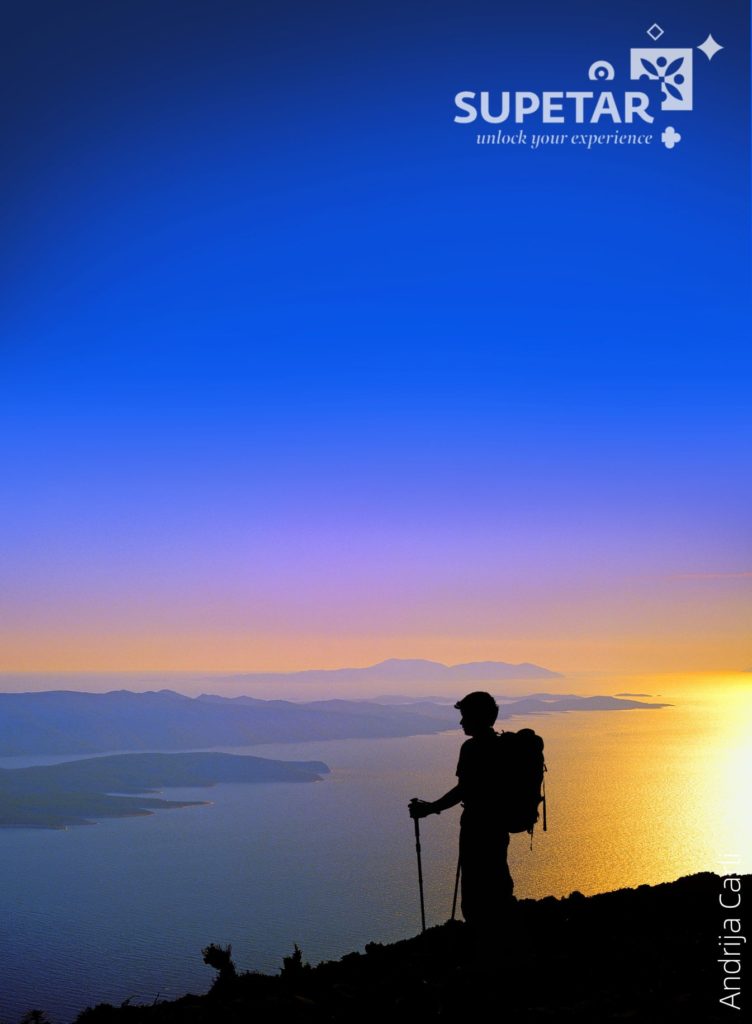
STAMPS
There is a stamp placed at visible spot on every of 12 locations. Put a stamp on an indicated spot on the back page of this map. Have a liquid for a stamp with you. The spot for a stamp is marked with the number of the location on the map.
Once you visit all the locations and place all the stamps on the indicated spots, you will create the photo of St. George, protector of our island killing the dragon which stands as Brač island’s coat of arms. We recommend you to frame it and have it as a souvenir from this journey and a reminder of this, hopefully, extraordinary experince.
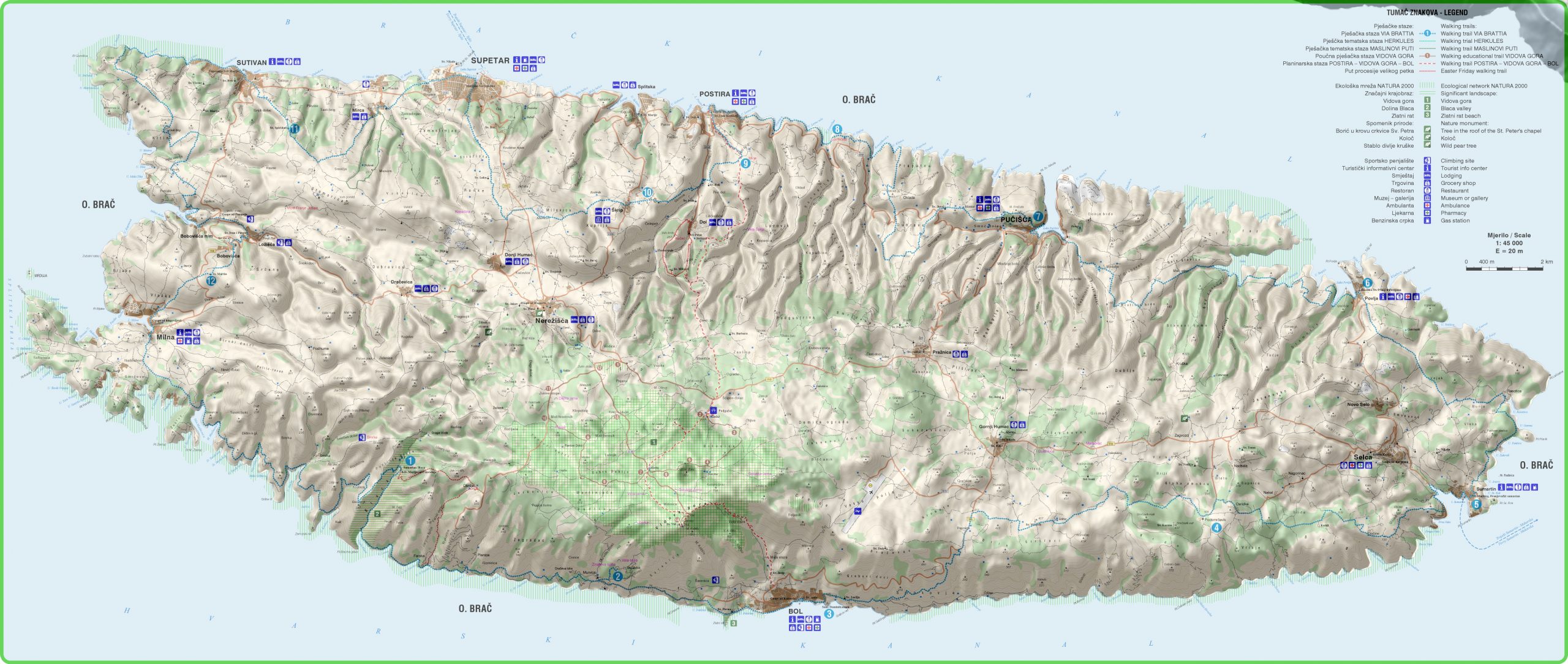
ABOUT LOCATIONS WITH THE STAMPS
1 – Hermitage Blaca Museum
The hermitage (monastery) was founded in the 16th century by the Glagolitic priests who come to Brač fleeding from Poljica before the Turks. Blaca can be reached from many directions, but always exclusively by foot. Blaca are really an exceptional monument of human work, with great historical, economic, artistic and scientific content. Hermitage Blaca is an outstanding natural and cultural phenomenon, a wonderful oasis of peace and memories of days gone by. Instructions for visitors: To get to the museum one has to walk on a steep 2.5- km-long goat path; Sportswear and sport footwear are strongly recommended. Since there are currently no food or beverages available to purchase at the museum, it is recommended that visitors bring their own water or refreshing drink.

2 – Dragon’s Cave
Dragon’s cave is a monument to the hermit-like monastic life of the Glagolitic priests from the 15th century. It is situated 200 m above the village Murvice, in the heart of Vidova Gora (mountain). Throughout the centuries it has served as the residence and sanctuary of Poljica Glagolitic priests fleeing before the Turkish invasion to continue their monastic life in the caves. The cave contains the petrified history of a persecuted nation which had reconciled its ancient pagan faith with a Christian concept of the world. It is therefore in this cave that ancient Slavic myths of werewolves, fairies, incubi and witches with Bosnian kings and scenes from the apocalypse.
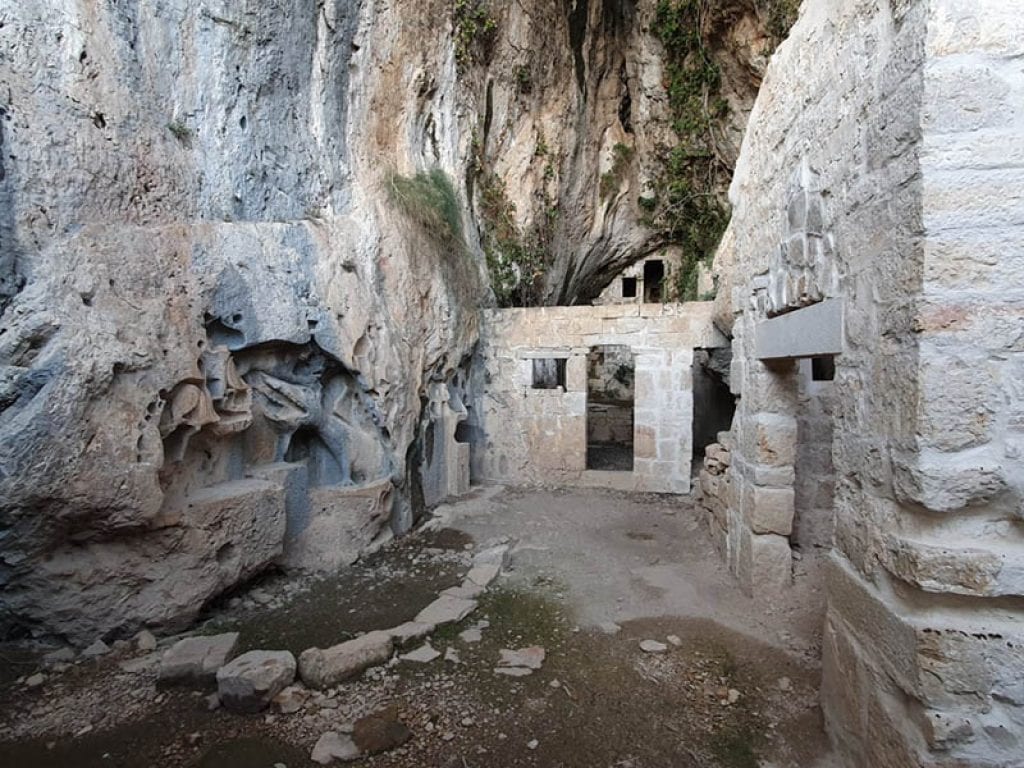
3 – Dominican Monastery In Bol
It was founded in 1475 in a location chosen for the Dominicans by the inhabitants of Bol, and confirmed by the Brač Duke Zacharia. The spiritual and cultural influence of the monastery was felt for centuries, not only in Bol but also the wider region. Aside from the museum in the monastery there is also a library with rare books and manuscripts. In the monastery church there is a coffered ceiling with a picture of Apotheosis of St. Dominic, the work of the local artist Tripo Kokolje from the 17th century, while on the main altar there is an altarpiece of the “Mother of God with the saints” from the workshop of Jacob Tintoretto.

th the saints” from the workshop of Jacob Tintoretto.
4 – Podsmrčevik
Podsmrčevik is one of five hamlets settled in the inner part of the island, northwest of Selca. Today they are almost abandoned because their people settled in nearby settlements.
The oldest parts of this hamlet are characterized by small stone houses covered in stone slabs, using the dry-wall technique or built from hewn stone blocks, with enclosed gardens and stables. These dwelings show us how people used to live in these areas and are real monuments of Brač rural architecture.
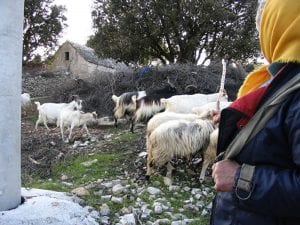
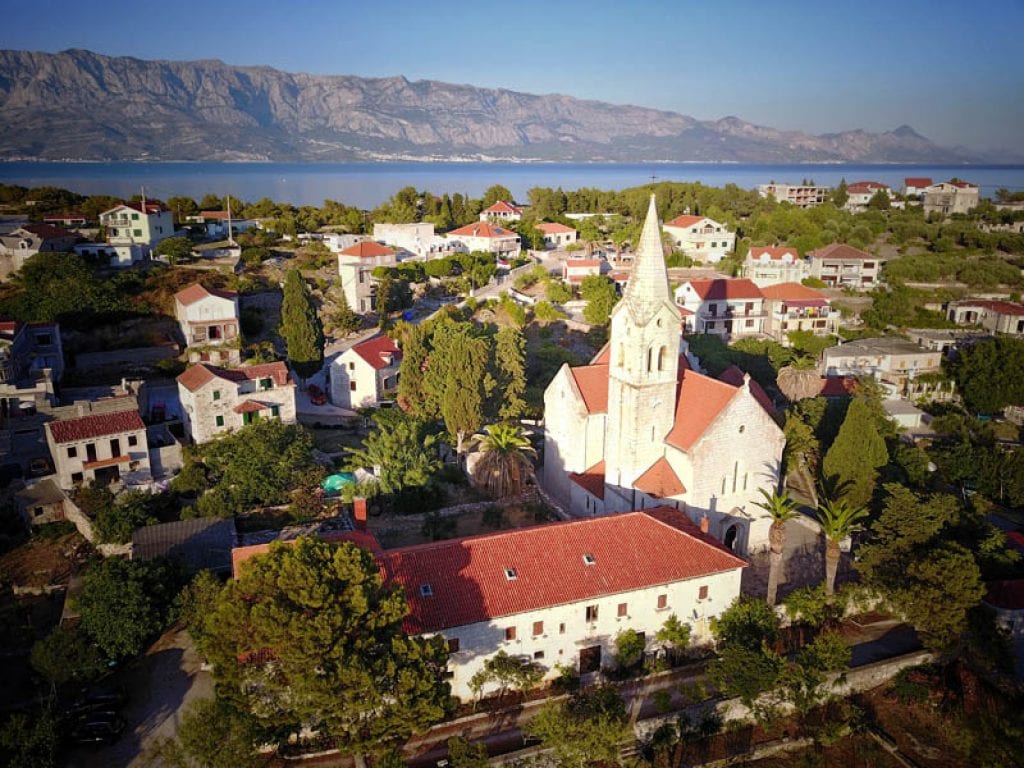
5 – Franciscan Monastery And The Parish Church Of St. Martin In Sumartin
Fleeing the Turks Franciscan monks came with the settlers and founded Sumartin in the middle of the 17th century. The monastery is synonymous with the legendary poet and Franciscan monk Andrija Kačić-Miošić and today holds a private museum with valuable collection of artifacts. Next to the parish church also look for the footprint commemorating the “Footsteps of St. Martin de Tours”.
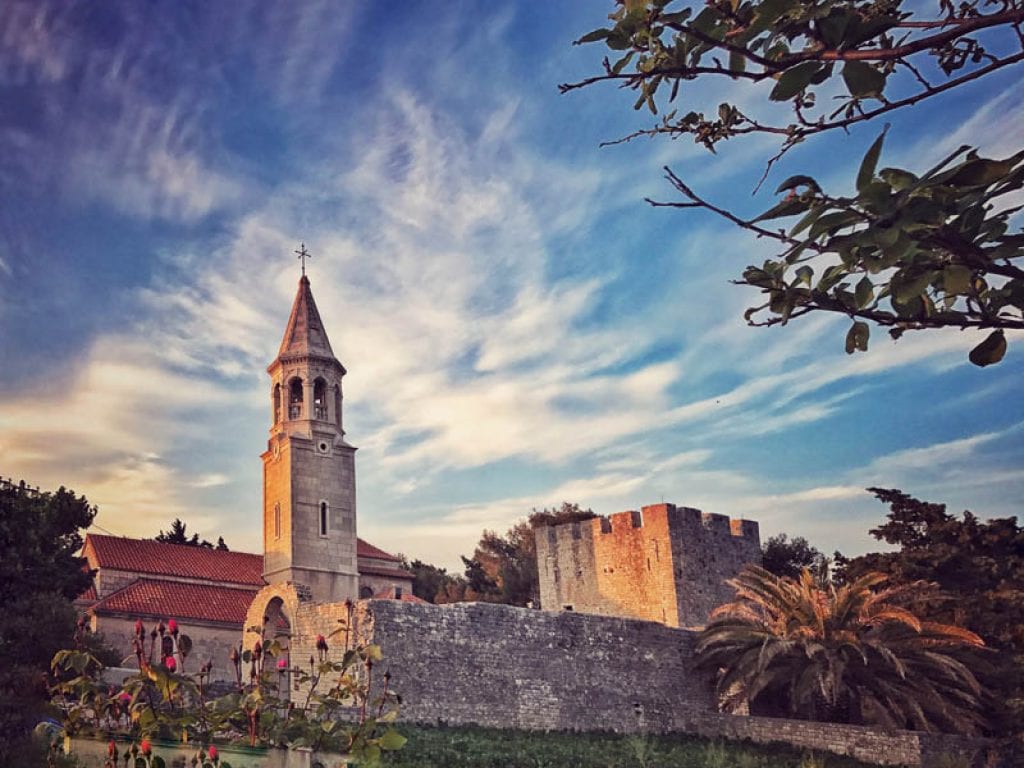
6 – Early Christian Basilica In Povlja
Many visitors come to Povlja to see the early Christian basilica on the grounds of the parish church. The remains of the Early Christian basilica date back from 5th and 6th centuries.
Many parts of this triple – naved basilica can be seen in their entirety, also as an area of the former baptistery. Povaljski prag and Povaljska listina, of great importance to Croatian history, also originated here.
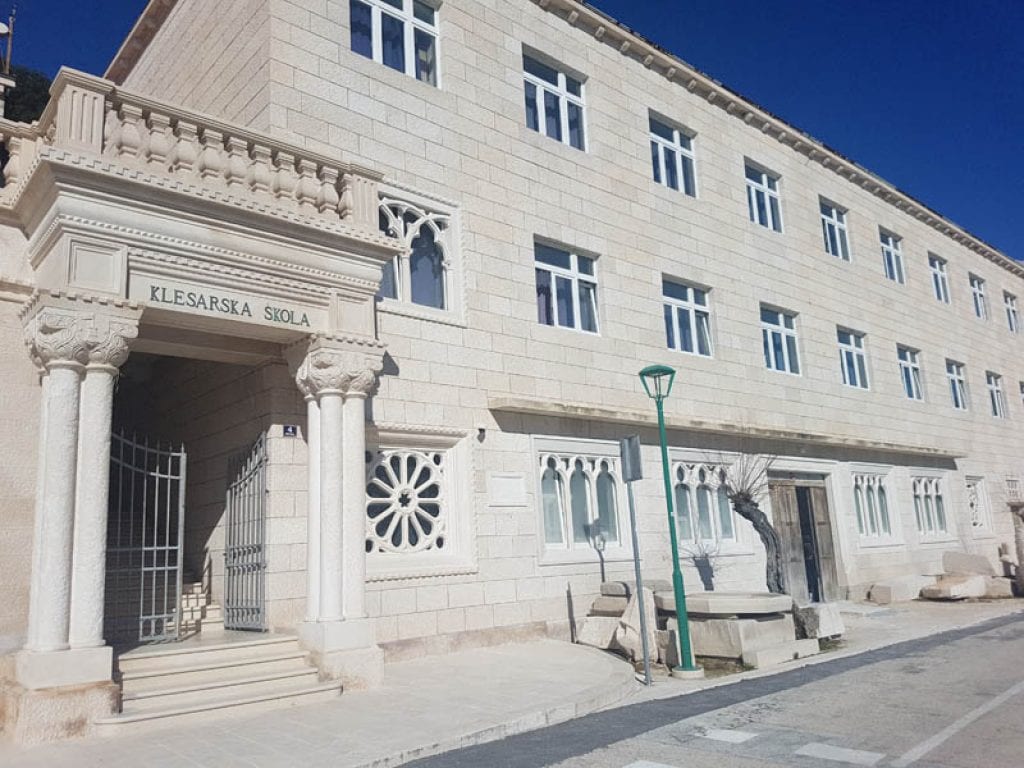
7 – The Stonemason school in Pučišća
The Stonemason school began with its work in the remote 1909. This is the only school in the Republic of Croatia that educates the stone masons. Its work is based on the ancient Roman stone processing technology using hand crafted tools. It is recognized throughout the world and is being visited by innumerous visitors each year. The skill of hand stone processing using the old Roman tools nourished in the Stonemason school is protected by non-material cultural heritage of the Republic of Croatia.
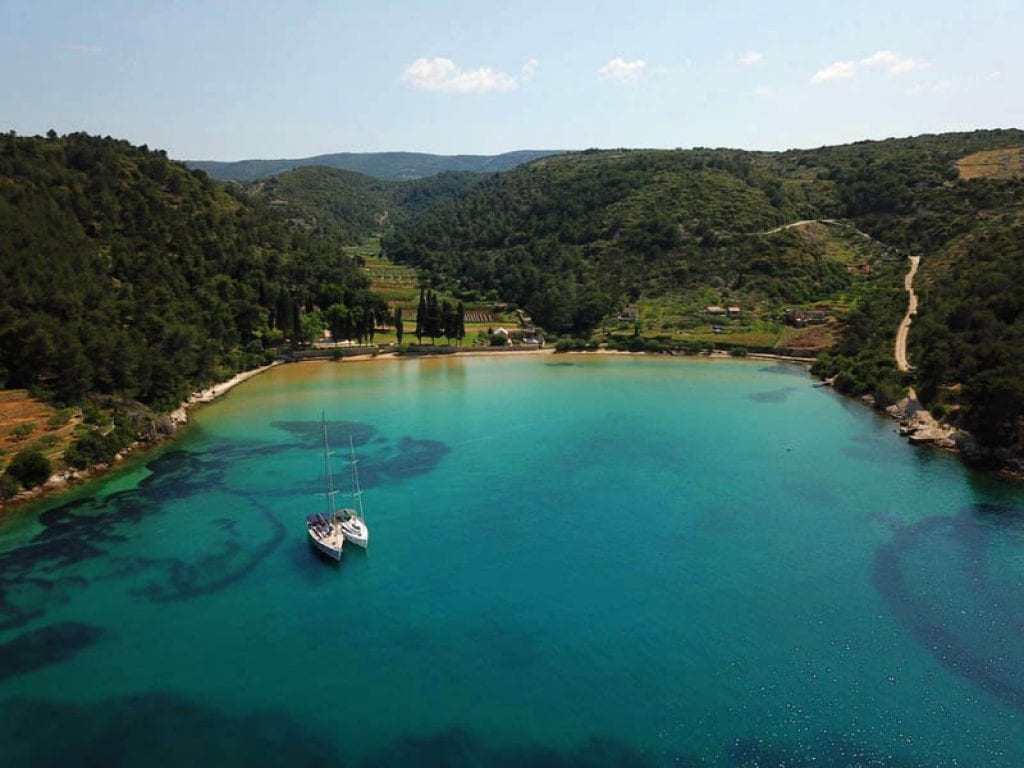
8 – Lovrečina And The Basilica Of St. Lawrence
The Roman farm was built in Lovrečina bay, close to a water source and a fertile field. In the 5th century a Benedictine monastery was founded in the border area with the church dedicated to St. Lawrence, whose name has been preserved in the name of the bay. Lovrečina is the biggest sandy bay on the island Brač.

9 – Late Antique Villa On Mirje Near Postira
Mirje is situated among the two important centers on the Adriatic part of the province: Diocletian’s palace in Split and imperial quarries near Škrip, from which architectural stone for building the monumental palace was cut.
Numerous fragments of stone furniture confirmed the existence of a sacral building from the 6th century. The analysis of the discovered walls suggests that the complex was not built for the convent’s community, but that was in fact a later adaptation of the late antique villa with thermal complex.
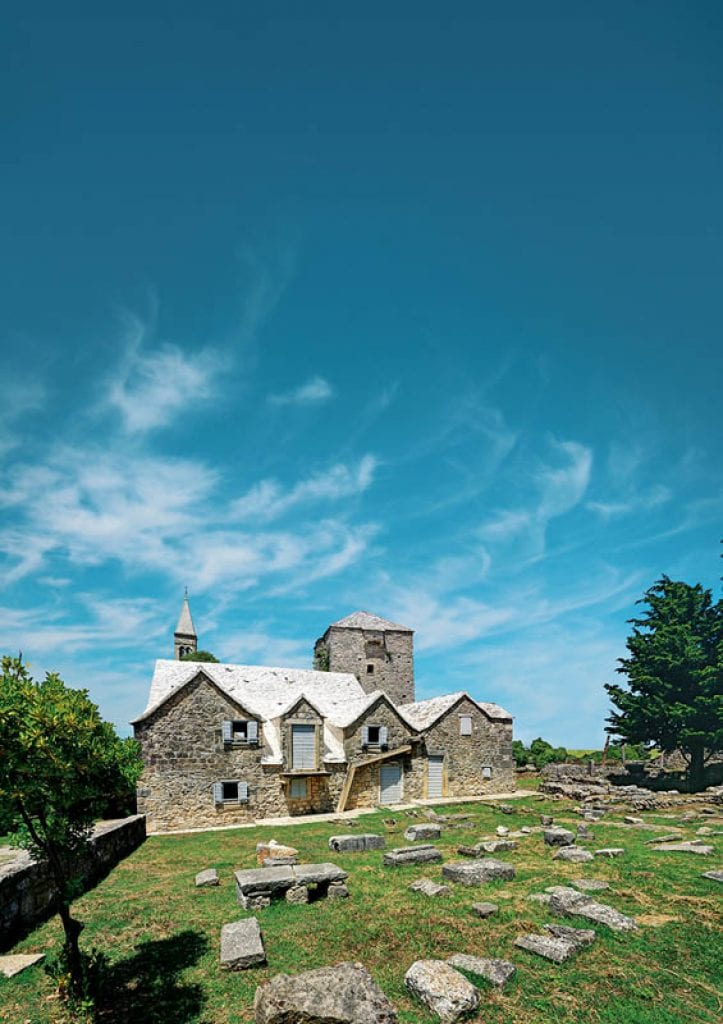
10 – The Island Of Brač Museum In Škrip
The Island of Brač Museum, situated in Radojković Tower from the 16th century, is one of the Croatian most visited museums, annually visited by more than 15 000 people. Its foundations date back 1500 years A.C. In the lower floor of the Museum, there is a Roman Mausoleum where, according to the legend, rest Valerija and Priska – wife and daughter of the Roman emperor Diocletian. The Island of Brač Museum in Škrip is the place not to be missed when visiting Brač.
11 – St. Spiridon’s Church
Uniquely shaped small chapel at the crossroad of ancient roads from Sutivan to Mirca and former parish Donji Humac (16th century). Not far from the church there is a speleological location (pit), the only one in Sutivan area.


12 – Church of St.Martin
We don’t know exact time construction of the church of St.Martin, but shows early Romanesque style characteristics. On the facade of her annexed bell tower in the late 15th century. Simply stone facade on top of a brick distaff with a triangular pediment from the 14th century church is vaulted barrel vault without a flange, and the walls were broken down broad shallow niches. Above the altar is a Renaissance stone relief, workshop Firentinac, depicting St. Martin and the beggar on horseback.
More:
https://supetar.hr/via-brattia/
This post is also available in: Croatian
